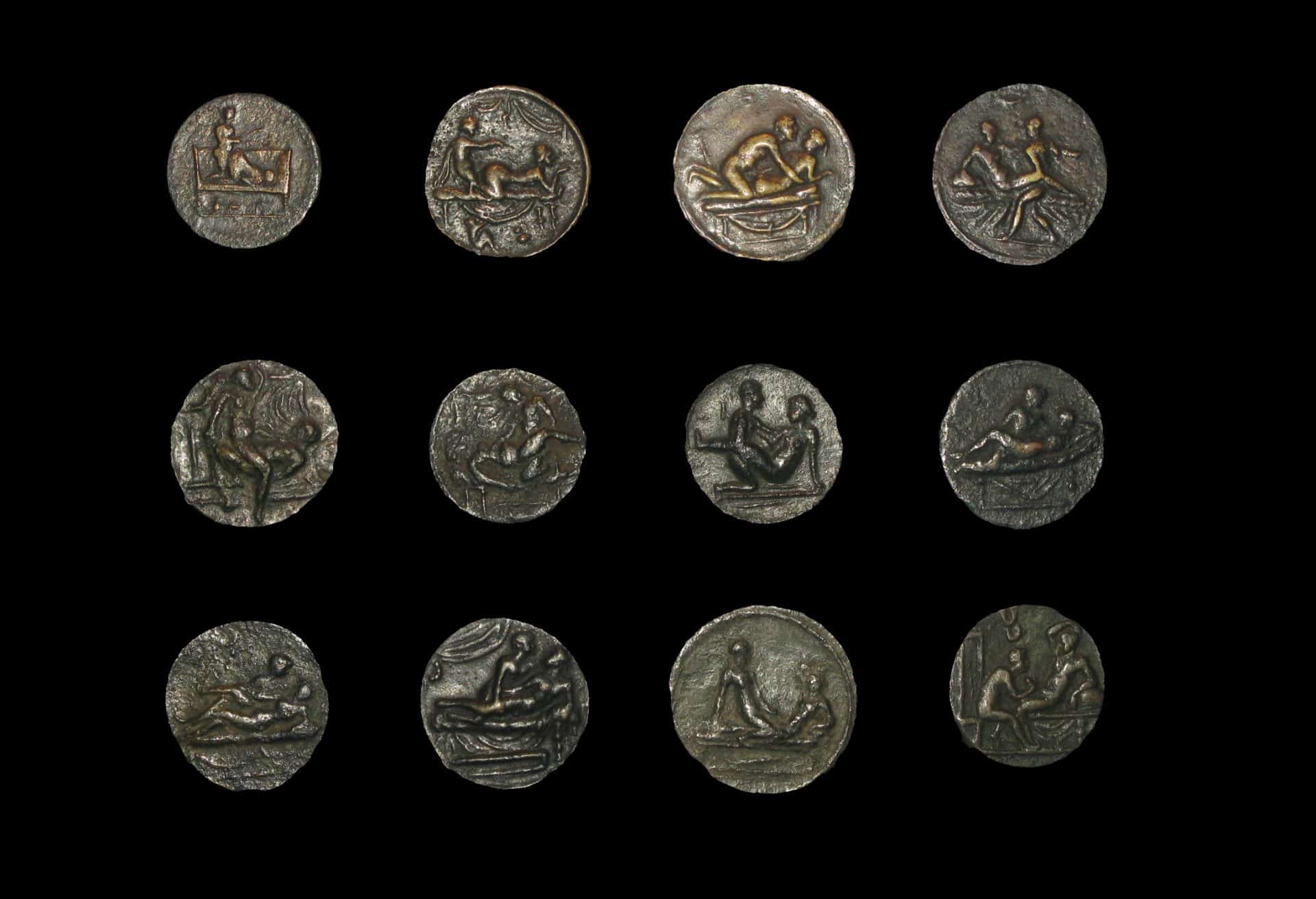Spintriae are small brass or bronze tokens from the Roman period, depicting graphic scenes of sexual acts or symbols that range from I-XVI.
It is speculated that the tokens were used for access or payment in brothels, with tokens showing scenes involving male and female figures, although some examples have been uncovered that may show homosexual acts.
Brothels, commonly called a lupanar or lupanarium were licensed and well documented in literary sources and contemporary regional lists. Licensed brothels were owned and managed by a leno (pimp) or a lena (madam), whilst the latter acted as an agent and used a secretary called a villicus puelarum to manage the prostitutes and determine pricing for services.
A higher classed prostitute was registered with the aediles and was known as a meretrix, whilst the more pejorative scortum could be used for prostitutes of either gender. Unregistered prostitutes fell under the broad category of prostibulae and were generally sex slaves or lower classed prostitutes in unregistered brothels.
Evidence for spintriae being brothel tokens is limited, with the only associated accounts being a short phrase from Suetonius (Lives of the Caesars, Tiberius); and the second, from an epigram by Martial.
Suetonius documents: “After the defendant had been condemned, this kind of accusation gradually went so far that even such acts as these were regarded as capital crimes: to beat a slave near a statue of Augustus, or to change one’s clothes there; to carry a ring or coin stamped with his image [the Emperor] into a privy or a brothel, or to criticise any word or act of his” – vaguely suggesting that normal coinage was a crime to use as currency in a brothel.
Other theories suggest that spintriae were gaming tokens, with the numerals playing a role in the game position or scoring, or that they were admission tokens for entry to the theatre or arena games.
The most plausible explanation comes from excavations in Pompeii by Luciana Jacobelli, where a large fresco and vases in the Terme Suburbane depicts a series of scenes identical to those that appear on the observes of many spintriae.
Jacobelli suggests that the scenes and numerals on the spintriae were locker tokens, corresponding to containers for leaving clothing and belongings whilst bathing in the Terme Suburbane.
Header Image Credit : John Faithfull – CC BY-SA 2.0 UK (Adapted)





